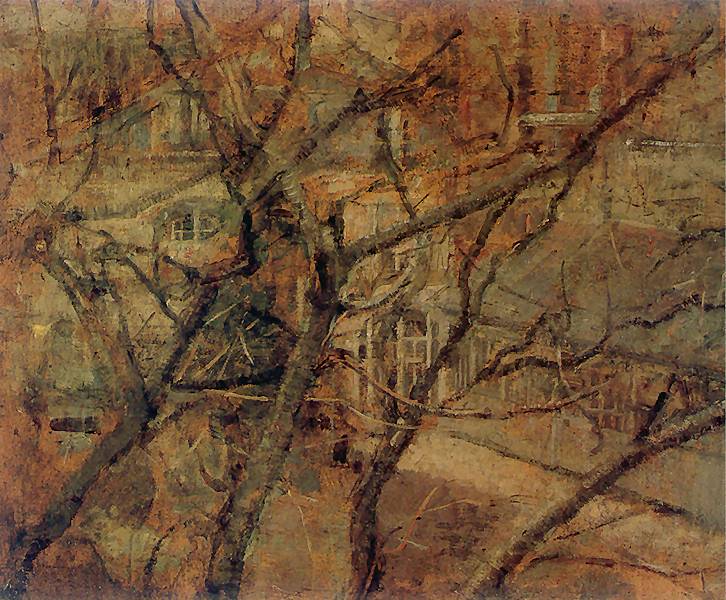50 years ago, on 1 November 1971, the brightest star of pre-war Polish cinema – Jadwiga Smosarska – died in a hospital in Warsaw.
by Wiesław Chełminiak
A life in 26 frames
By the 20th century, the mystique surrounding kings and emperors had disappeared. The authority of the church and synagogue had weakened. Politicians quickly grew in popularity and just as quickly discovered that public favor is unreliable. Writers, artists and scientists were still respected, but sportsmen and film actors became the true idols of millions. Among all the belle époque inventions, it was the cinematograph that aroused the greatest fervor.
This new media came under fire from critics. People complained that it was contributing to the collapse of culture and spoiled the tastes of an inexperienced audience. Today, the judgement is not that harsh. The fledgling film business simply adapted its offer to the expectations of an audience who, for the first time, had the free time and the money for entertainment that was more sophisticated than an inn or brothel.
In Poland, which had regained its independence, the development of the new media was hampered by an acute shortage of capital. In a country devastated by a war that had lasted two years longer than in the West, the rulers disregarded the need for a “lighter muse”. The market was ruled by cinematographers and private producers focused only on profit. The films were made quickly and cheaply, under the watchful eye of the censorship, which forbade any immoral scenes. Cinematography was subordinate to the Ministry of Interior which appreciated its propaganda potential. However, it was not due to the pressure of officials that the films created a hundred years ago often were mostly patriotic. The audience expected it, reacting enthusiastically when a Polish uniform or an image of the Virgin Mary of Częstochowa appeared on the screen.
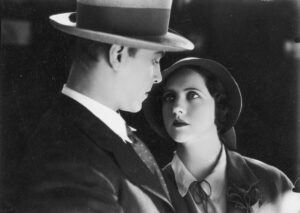
A girl from the neighborhood
Jadwiga Filipina Smosarska was born on 23 September 1898. She had been bitten by the theater bug in her childhood. Like every girl from a good home, she knew how to dance, sing, play the piano and recite poems by the Romantics. She dreamed of becoming a ballerina or an opera diva.
As a native of Warsaw, she had better chances than girls from the provinces. 18-year-old Jadzia made her stage debut in the amateur performance of “The Un-divine Comedy”, but her family was barely making ends meet, therefore, after graduating, she worked at the cash desk at the Bank of Poland. She continued her acting studies privately and at the Dramatic School in Warsaw. Juliusz Osterwa was her idol at that time.
The film producer Aleksander Hertz, who was the head of “Sfinks”, the first real Polish film company, discovered Smosarska. In 1919, she appeared in the film adaptation of Stanisław Przybyszewski’s scandalous work “For Happiness”. The production was discontinued, and Jadwiga played only a few scenes, but it turned out that she was a natural in front of the camera. The throne of the queen of Polish cinema was then free. After the departure of Pola Negri, Halina Bruczówna and other starlets who had decided to seek happiness in America, Italy and Germany, Hertz was searching for a new star.
He chose Smosarska because she did not want to leave Poland and she had good press. She was even singled out for her performances in otherwise criticized performances. Apart from her talent, Jadwiga represented a type of beauty that made an impression on men in the 1920s. Big eyes, dark hair, a long nose, she looked more like the nice girl next door than an inaccessible beauty. She looked equally good in the costumes of peasants, townswomen and maidens. Unlike her competitors, she did not cause scandals. In life, as on the screen, she was honest, polite and elegant. She managed on her own and was unpretentious, a maiden with principles who avoided casual romances. If someone kissed Jadzia, that someone had to marry her. The conservative audience liked this very much.
Smosarska divided her time between the cinema and the stage of the Warsaw Rozmaitości Theater. The star’s biographer Małgorzata Hendrykowska, believes that she acted in films only for money. Like most actors, she deeply despised the business that fed her and dressed her, but she was reasonable enough not to admit it aloud.
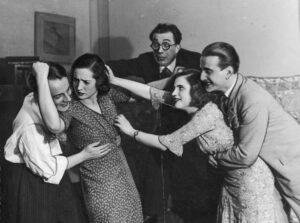
Slave of love
In November 1920, 22-year-old Jadwiga appeared in the short film “The Heroic Polish Scout”, recalling the recent fights for Vilnius. She helped the eponymous youth to get out of the hands of the Bolsheviks, who had temporarily taken over the city. “Grace, beauty and her acting captivate the viewer” – raved the newspapers. A few months later, the premiere of “Miracle on the Vistula” took place, realized in an identical, sensational and patriotic formula.
The director of both films, Ryszard Srzednicki alias Bolesławski, later made a career in the USA. His star can be found on the famous Hollywood Walk of Fame. Smosarska continued to play the roles of young, unwavering Polish women. “Iwonka. The Story of a Girl’s Soul” from 1925 had terrible reviews. Reviewers were shocked by the pathos and stereotypical plot, and the viewers – quite the opposite. The girl chosen by the lieutenant captured the collective imagination. The actress was comfortable with such a repertoire also because the world of traditional values was no stranger to her at all. She had received a patriotic upbringing, and her younger brother had volunteered to fight the Bolsheviks and died.
Smosarska also performed well in the melodramas adored by women. In “Mystery of the Streetcar Stop” she was a poor seamstress seduced by a blasé count, who then abandoned her in a state of pregnancy. In “Slave of Love” (the biggest box office hit of Polish silent cinema) – a converted lover of a bandit. In 1926, a film was released that strengthened her star status – “The Leper.”
The success of the film adaptation of the novel, hailed as “literature for cooks”, infuriated snobbish critics. They reserved the actress from criticism, but lambasted the melodramas, calling them trivial and without any concept or credibility. “Easy profit and cheap tears,” commented one of the reviewers bluntly. Another wrote about “cryptopornography” and mocked that the protagonists played by Smosarska usually commited or tried to commit suicide. The public didn’t mind them though, filling the cinemas showing these “big-city erotic dramas.”
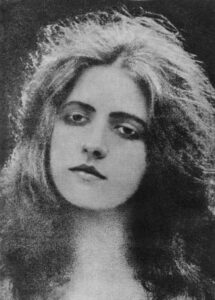
Horses from Częstochowa
The “Sfinks” label skillfully advertised its actress. Hertz referred to her in interviews as “the Polish Lillian Gish.” He organized a meeting between Jadwiga and another Hollywood star couple – Mary Pickford and Douglas Fairbanks, who happened to be in Warsaw. Women identified with her. “When Smosarska smiles, the audience smiles with her, and when Smosarska cries, everyone remains silent,” reported the “Świat” weekly.
Fame did not spoil her. She stubbornly stuck to the theater so she could prove her skills there. However, she never reached the level of Helena Modrzejewska or Irena Solska, and compared to those legends of the Polish scene, she looked wan and ineffectual. On the other hand, her performances increased attendance in theaters.
Already in the19th century, it was customary for actors to tour cities and towns during the holidays. For the provincial towns, such a tour was an opportunity to see a movie star up close and live. People lined up for Smosarska’s autograph. In Częstochowa, enthusiastic fans unhitched the horses from the actress’s sled and dragged it to the hotel themselves.
In a poll of the editorial office of “Cinema for All” in 1929, she was chosen the queen of Polish cinema, easily ahead of Greta Garbo and Dolores del Rio (one could vote for foreign idols too). She also won subsequent polls of this type, leaving younger and more beautiful competitors in the dust. “An ineffable grace, there is a longing in her eyes similar to Chopin’s nocturnes”, raved “Nowości Filmowe”. Scenarios were reworked to suit Smosarska’s on-screen image. In the adaptation of “The Promised Land” the ending was made more optimistic, rightly predicting that the public would not bear the humiliation of their adored Jadzia.
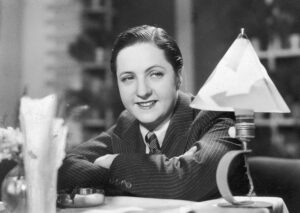
There was one queen
In the 1930s, when the era of “talkies” began, Smosarska specialized in costume dramas (“Księżna Łowicka”, “Prince Józef’s Uhlan”, “Barbara Radziwiłłówna”) which increased the ranks of her fans even more. The detective story “Prosecutor Alicja Horn”, in which she played for the first time a modern, emancipated woman, was less well liked. But then more triumphs followed. The actress refreshed her image by appearing in musical comedies that we would call romantic comedies today.
In the film “Is Lucyna a girl”, she donned male garb, like Marlena Dietrich (the press joked that “pants suit her face”). In “Jadzia” she pretended to be a dummy, in “The Two Joannas” she was a disfigured woman. In the drama “I Lied” she was a desperate, lost woman after an ordeal, which the viewers did not like very much. But even so in Poland there was a saying: “our innocent, our only, our chosen one, our beloved, familiar and brisky – Jadzia Smosarska!”
There was no better-paid actress in Warsaw. For participation in a film, she received eight thousand zlotys (a worker earned an average of one hundred zlotys a month, a white collar worker 280 zlotys, women always less than men). On top of that, there were advertising fees. She had offers from the USA, but rejected them on various pretexts. In Hollywood, she would be just one of many.
Smosarska was a rather reserved person. She always protected her privacy, and met with journalists rarely. She secretly married the engineer Zygmunt Protassewicz, who built her a 14-room villa in Mokotów (she designed the building and interior herself). They didn’t have children. In 1938, the queen of cinema received the Golden Cross of Merit “in recognition of her contribution to the promotion of Polish film culture.” The same honor befell the king – Eugene Bodo.
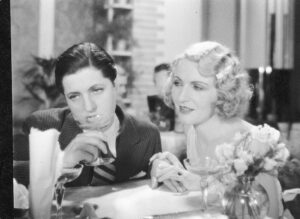
Between a symbol and a stereotype
A few months before the outbreak of the war, the writer Kornel Makuszyński predicted that television would soon overtake the cinema and people would watch Smosarska at home. He was wrong, though not entirely. Her last theatrical role – the wife of Pushkin in Jarosław Iwaszkiewicz’s “Masquerade” – gave the actress a lot of satisfaction. In 1939, the press announced two new films with Smosarska, but they were never completed. The war surprised the Protassewiczs on vacation in the countryside. With no money, and only a small suitcase, Jadwiga made her way through Lithuania to the United States.
Living in poverty, she was involved in raising money to help artists-refugees and those who stayed in the occupied country. The income from these performances for the Polish community was donated to charity. She had no chance of a Hollywood role, she was in her forties, and she spoke English with a strong accent. Anyway, Smosarska never knew how to fight for her interests, she lacked assertiveness. She was also sick. The second of her brothers died in a German camp.
Fortunately, she had a resourceful husband. Zygmunt started his American career as a simple construction worker and ended as the head of a precision tools factory. Jadwiga suffered during her time in exile. She missed her country. During the uprising , her villa in Mokotów served as a field hospital, later, a kindergarten (with the consent of the owner) was arranged there.
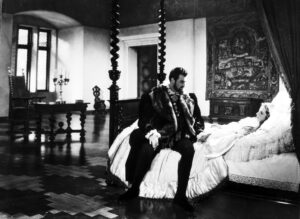
She visited the People’s Republic of Poland for the first time in June 1958, and met with sympathy and even adoration. She was a symbol of the older, non-communist times.
After her husband retired, they decided to move permanently to Warsaw. They bought a flat in a block of flats. The queen of Polish cinema abdicated, and she never stood in front of the camera again. She avoided public appearances, and did nothing to destroy her legend. In the eyes of her former admirers, she wanted to remain beautiful and young. She died less than a year after returning. “I had the most important thing in an actor’s life – a great human sympathy,” she said in one of her last interviews.
Jadwiga Smosarska appeared in 26 films. Today, they seem naive, schematic and unbearably sentimental. The comedies, in which she allowed herself to be relaxed, have stood the test of time best. In serious roles, she was a prisoner of the stereotype of a Polish woman – brave and noble, sacrificing herself for her beloved and her homeland, but this was what the viewers wanted from her.
Author: Wiesław Chełminiak
Translation: Alicja Rose & Jessica Sirotin


